Bel Bundle
Who Really Owns the Cheese? Unveiling Bel Company's Ownership Secrets
Ever wondered who steers the ship behind iconic brands like The Laughing Cow and Mini Babybel? Understanding the ownership structure of Bel Company is key to grasping its strategic moves and market influence. From its humble beginnings in 1865 to its current status as a global snacking giant, Bel's ownership story is a fascinating journey.
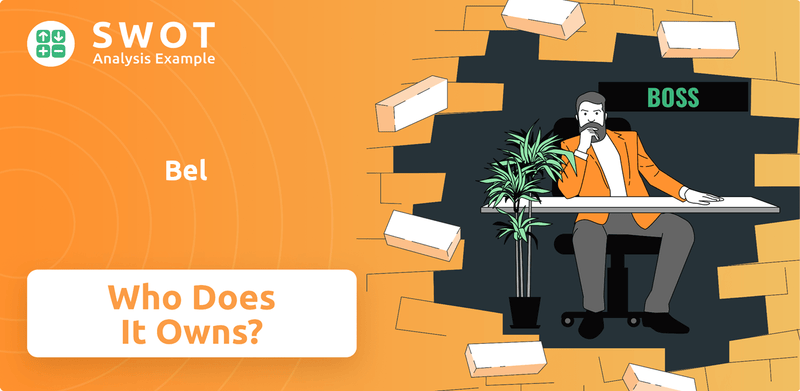
This exploration into Bel SWOT Analysis will reveal the intricate details of Bel Group owner, from its family-centric roots to its current composition. We will dissect the roles of major investors and stakeholders, providing a comprehensive look at who owns Bel Company and how this influences its future. Discover the answers to questions like "Who founded Bel cheese?" and "Is Bel Company publicly traded?" as we delve into the heart of this global cheese powerhouse, exploring its history, brands, and financial landscape, including Bel cheese brand owners.
Who Founded Bel?
The story of Bel Company ownership begins in 1865. Jules Bel initiated the journey by establishing a cheese ripening and trading business in Orgelet, France. This marked the foundational step towards what would become a global cheese empire.
Following Jules Bel's passing in 1904, his son, Léon Bel, took over. Léon's vision and strategic acumen were pivotal, especially after World War I, as he recognized the potential of the cheese industry. His foresight laid the groundwork for the company's future success.
In 1922, Léon Bel officially founded Fromageries Bel as a limited liability company. A significant milestone was the 1921 trademarking of The Laughing Cow (La Vache qui rit) cheese. This product set itself apart through its unique recipe, texture, individual portions, and innovative advertising, becoming a cornerstone of the company's brand identity.
Bel's international expansion began in 1929.
The company introduced brands like Bonbel and Babybel.
Robert Fiévet, Léon Bel's son-in-law, became CEO in 1937 and Chairman in 1941.
The founders aimed for accessible, industrialized, and nutritious cheese products.
The company's early equity splits are not publicly available.
Family control was crucial in guiding expansion.
The early years of Bel Company ownership were marked by family leadership and strategic vision. The company's initial growth involved establishing subsidiaries in the United Kingdom and Belgium, alongside product diversification with brands like Bonbel and Babybel. Robert Fiévet, a key figure, further solidified the family's control. The focus was on accessible and nutritious cheese products. While specific details about the initial equity distribution are not available, the family's commitment to maintaining control and guiding the company's expansion is evident. To learn more about the company's strategic direction, you can read about the Growth Strategy of Bel.
The founders, Jules and Léon Bel, established the company's foundation and vision.
- Jules Bel started the cheese business in 1865.
- Léon Bel founded Fromageries Bel in 1922.
- The Laughing Cow was trademarked in 1921.
- Early expansion included subsidiaries in the UK and Belgium.
- Robert Fiévet, son-in-law of Léon Bel, became CEO and Chairman.
Bel SWOT Analysis
- Complete SWOT Breakdown
- Fully Customizable
- Editable in Excel & Word
- Professional Formatting
- Investor-Ready Format
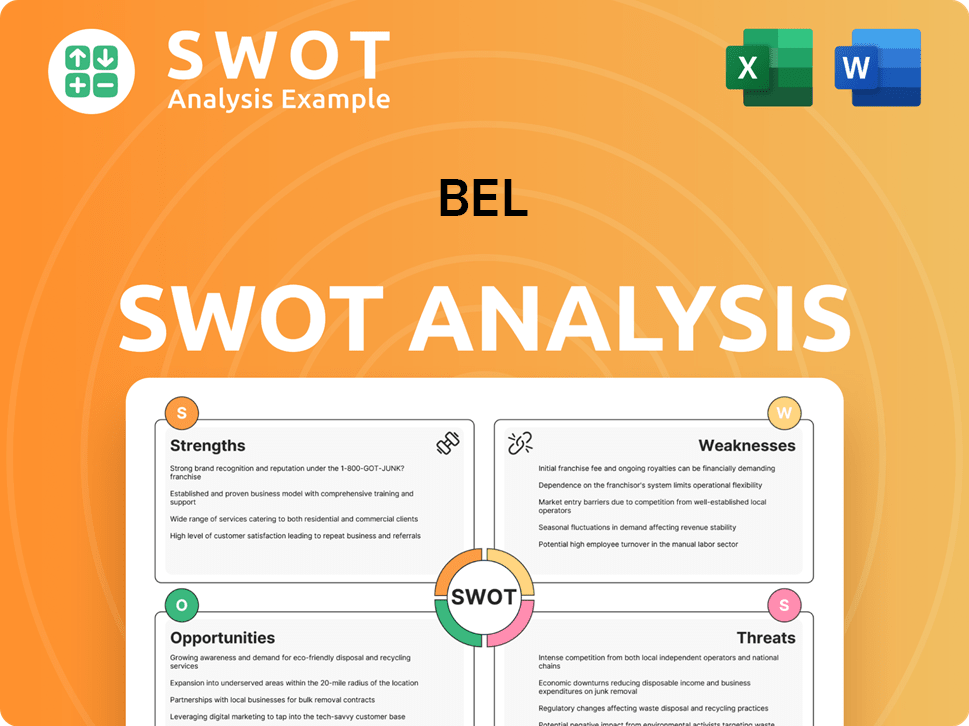
How Has Bel’s Ownership Changed Over Time?
The ownership of Bel Group has been significantly shaped by its founding family, evolving from a private entity to a publicly listed company with a dominant family holding. The company's structure is centered around Unibel, a French corporation that fully owns Bel since January 25, 2022. Unibel is, in turn, owned by members of the founding Bel/Fiévet family, who are bound by a shareholders' agreement. This structure has allowed Bel to maintain a long-term strategic vision.
As of April 2025, the Bel Fiévet family, through its holding company Unibel, owns over 70% of Bel. In December 2024, the Fiévet, Sauvin, and Dufort families, through a joint tender offer, increased their control, holding 98.52% of Unibel's capital and 93.54% of its voting rights. Lactalis, through its Sofil holding company, holds a 24.1% stake in Fromageries Bel's share capital, but it has no operational role. The Finance and Commercial Company, SOFICO, a wholly-owned subsidiary of Bel, holds 8.45% of Unibel's shares in treasury.
| Key Events | Impact on Ownership | Date |
|---|---|---|
| Unibel's 100% Ownership | Consolidated family control. | January 25, 2022 |
| Joint Tender Offer by Fiévet, Sauvin, and Dufort Families | Increased family control over Unibel. | December 2024 |
| Acquisition of MOM Group | Bel became the sole owner of MOM. | 2022 |
The strong family ownership of Bel, through Unibel, has enabled the company to pursue a long-term strategic vision, influencing significant decisions such as the acquisition of the remaining shares in MOM Group in 2022. This focus has also driven international expansion and diversification, including a 70% stake in Shandong Junjun Cheese in China and a joint venture with Britannia Industries Ltd. in India. For more insights into the company's strategic approach, consider reading about the Marketing Strategy of Bel.
Bel Group's ownership is primarily controlled by the founding Bel/Fiévet family through Unibel.
- Unibel's control ensures a long-term strategic vision.
- Lactalis holds a significant minority stake but has no operational role.
- Recent family agreements have strengthened control within Unibel.
- Strategic acquisitions and ventures highlight expansion efforts.
Bel PESTLE Analysis
- Covers All 6 PESTLE Categories
- No Research Needed – Save Hours of Work
- Built by Experts, Trusted by Consultants
- Instant Download, Ready to Use
- 100% Editable, Fully Customizable
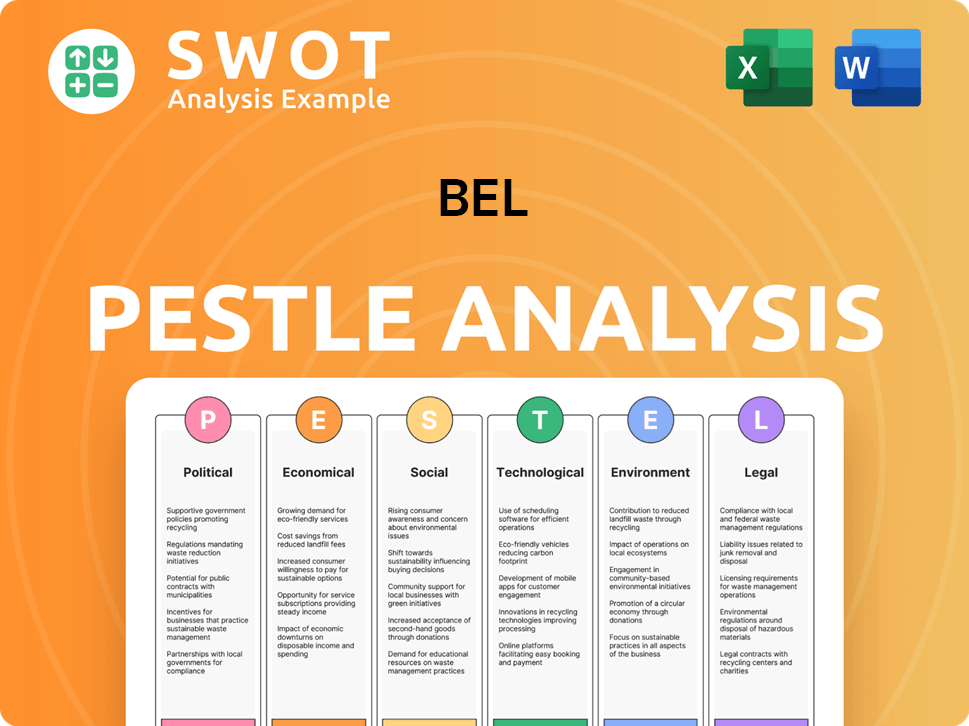
Who Sits on Bel’s Board?
The Board of Directors of the Bel Group oversees the company's strategic direction and major decisions. These decisions encompass economic, social, societal, environmental, financial, and industrial aspects. The Board ensures that these decisions are implemented by the General Management and considers the social and environmental impacts of the company's activities. As of May 14, 2018, the Board included seven members, reflecting a commitment to diverse representation.
The current leadership structure separates the roles of Chairman of the Board and Chief Executive Officer. Antoine Fiévet, a fifth-generation family member, has been the Group President since 2001 and his mandate as Chairman of the Board of Directors was renewed in May 2022. Cécile Béliot was appointed CEO of Bel in May 2022. Thierry Billot serves as the Lead Independent Director and chairs both the Appointments and Compensation Committee and the Audit Committee. The directors serve for a renewable four-year mandate, though mandates may be set at one, two, or three years for staggered renewal.
| Board Member | Role | Date of Appointment/Renewal |
|---|---|---|
| Antoine Fiévet | Chairman of the Board of Directors | Renewed May 2022 |
| Cécile Béliot | CEO | May 2022 |
| Thierry Billot | Lead Independent Director | N/A |
The voting power within the Bel Group is significantly influenced by Unibel, the lead holding company. Since January 2022, Unibel has held 100% ownership of Bel, effectively controlling the voting rights. This structure ensures that the Bel/Fiévet family maintains substantial control through their ownership stake. While Bel Fuse Inc. has a different stock structure, it is separate from the Bel Group's cheese business. There have been no recent public proxy battles or activist investor campaigns that have challenged the family's control.
The Bel Group is primarily owned and controlled by the Bel/Fiévet family through Unibel. This gives the family significant influence over the company's strategic decisions. The board of directors includes independent directors and a separation of the Chairman and CEO roles. The company's structure ensures effective decision-making and accountability.
- Unibel holds 100% of Bel Group since January 2022.
- Antoine Fiévet, a fifth-generation family member, is the Chairman.
- Cécile Béliot is the current CEO.
- Thierry Billot is the Lead Independent Director.
Bel Business Model Canvas
- Complete 9-Block Business Model Canvas
- Effortlessly Communicate Your Business Strategy
- Investor-Ready BMC Format
- 100% Editable and Customizable
- Clear and Structured Layout
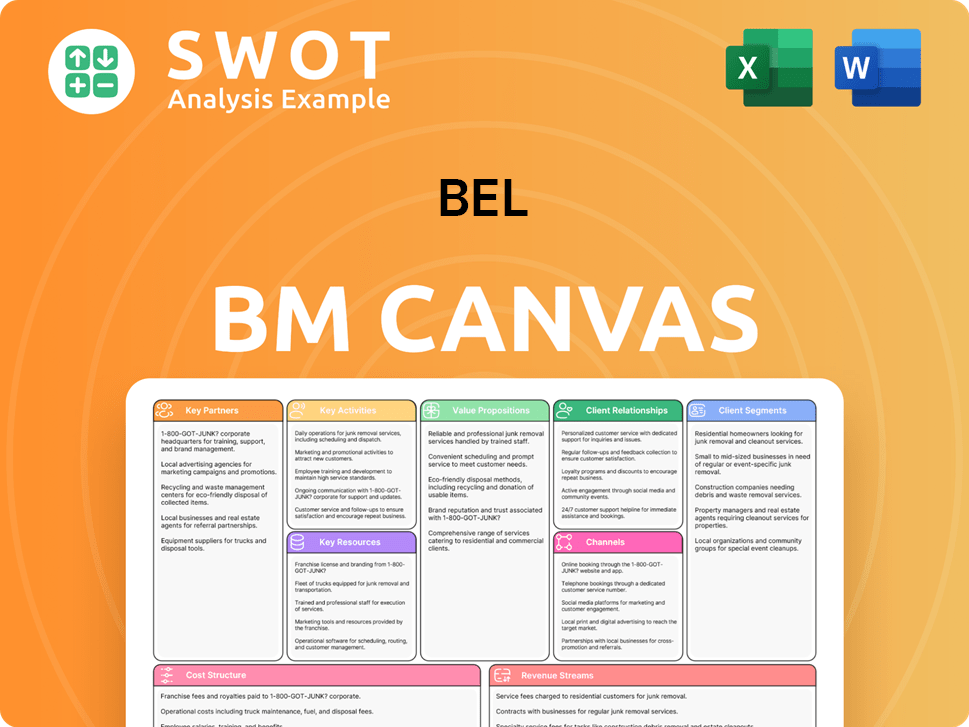
What Recent Changes Have Shaped Bel’s Ownership Landscape?
Over the past few years, the ownership structure of Bel Group, also known as Fromageries Bel, has seen strategic shifts aimed at global expansion and market consolidation. In May 2022, Bel Group acquired the remaining shares of MOM Group, becoming the sole owner. This move strengthened its position in the fruit, milk, and vegetable product sectors, particularly in France and the United States. Further international expansions included acquisitions in China and India, demonstrating a focus on geographical diversification and local manufacturing.
The primary shareholder, Unibel, a family-focused entity, continues to drive the long-term strategy of Bel Group. In 2024, Bel adopted the status of a mission-led company, emphasizing healthier and more sustainable food practices. The company's commitment to innovation is evident through significant investments in its Research, Innovation, and Development center, with a €7.5 million investment in 2024. Additionally, Bel is extending its employee shareholding program to new countries in 2025, reflecting a commitment to employee engagement and retention. Recent developments in June 2025 indicate that Bel Group plans to discontinue its plant-based cheese brand Nurishh by the end of the year due to profitability issues, and will close its Saint-Nazaire production site.
| Financial Metric | 2023 | 2024 |
|---|---|---|
| Consolidated Sales (€ billions) | €3.65 | €3.74 |
| Organic Growth | N/A | 3.4% |
| Net Financial Debt (€ millions) | N/A | €892 |
| Total Equity (€ millions) | N/A | €1,523 |
The financial performance of Bel Group, which is a key aspect of understanding its ownership, shows resilience and strategic focus. Consolidated sales reached €3.74 billion in 2024, reflecting a 3.4% organic growth. The company's net financial debt was €892 million by the end of 2024, with total equity at €1,523 million. These figures highlight the financial health of the company and its ability to manage debt while investing in growth. For a deeper dive into the competitive landscape, including other players in the market, consider exploring the Competitors Landscape of Bel.
Bel Group's ownership structure is largely driven by the family-focused Unibel. The company is expanding geographically, particularly in Asia. Strategic acquisitions and joint ventures are key to this growth.
Bel Group reported €3.74 billion in sales for 2024, with 3.4% organic growth. Net debt was €892 million, with total equity at €1,523 million. The company has a strong financial standing.
Bel is focused on healthier and more sustainable food practices. The company invests in innovation and is expanding its employee shareholding program. The closure of the Nurishh brand indicates strategic adjustments.
Antoine Fiévet remains the Group President, and Cécile Béliot is the CEO. The long-term vision is driven by the family-focused shareholder structure. The company is committed to innovation.
Bel Porter's Five Forces Analysis
- Covers All 5 Competitive Forces in Detail
- Structured for Consultants, Students, and Founders
- 100% Editable in Microsoft Word & Excel
- Instant Digital Download – Use Immediately
- Compatible with Mac & PC – Fully Unlocked
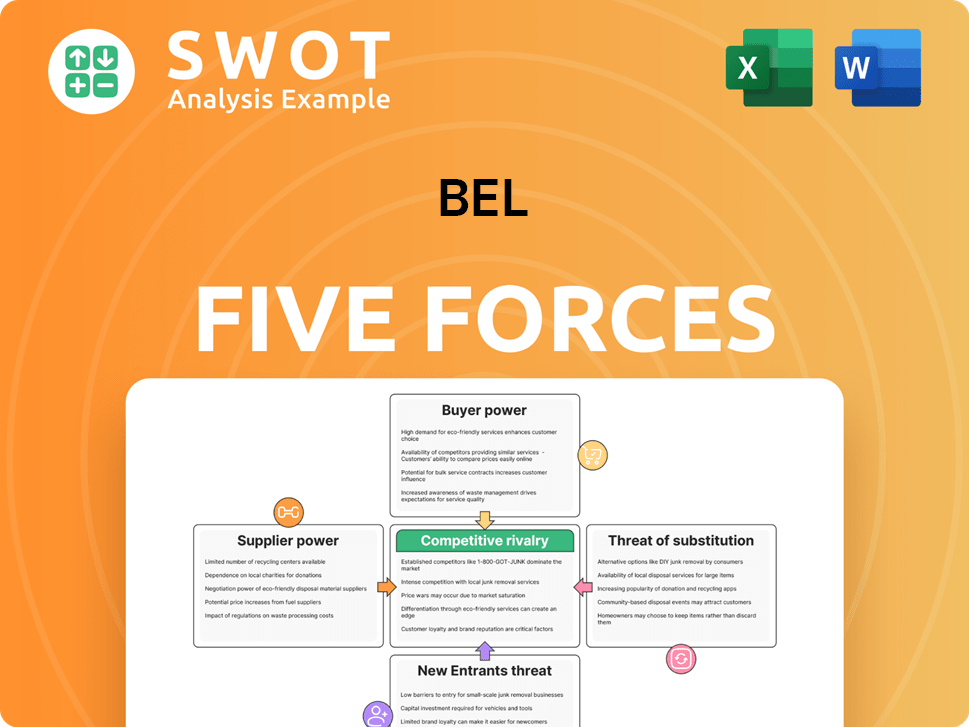
Related Blogs
- What are Mission Vision & Core Values of Bel Company?
- What is Competitive Landscape of Bel Company?
- What is Growth Strategy and Future Prospects of Bel Company?
- How Does Bel Company Work?
- What is Sales and Marketing Strategy of Bel Company?
- What is Brief History of Bel Company?
- What is Customer Demographics and Target Market of Bel Company?
Disclaimer
All information, articles, and product details provided on this website are for general informational and educational purposes only. We do not claim any ownership over, nor do we intend to infringe upon, any trademarks, copyrights, logos, brand names, or other intellectual property mentioned or depicted on this site. Such intellectual property remains the property of its respective owners, and any references here are made solely for identification or informational purposes, without implying any affiliation, endorsement, or partnership.
We make no representations or warranties, express or implied, regarding the accuracy, completeness, or suitability of any content or products presented. Nothing on this website should be construed as legal, tax, investment, financial, medical, or other professional advice. In addition, no part of this site—including articles or product references—constitutes a solicitation, recommendation, endorsement, advertisement, or offer to buy or sell any securities, franchises, or other financial instruments, particularly in jurisdictions where such activity would be unlawful.
All content is of a general nature and may not address the specific circumstances of any individual or entity. It is not a substitute for professional advice or services. Any actions you take based on the information provided here are strictly at your own risk. You accept full responsibility for any decisions or outcomes arising from your use of this website and agree to release us from any liability in connection with your use of, or reliance upon, the content or products found herein.